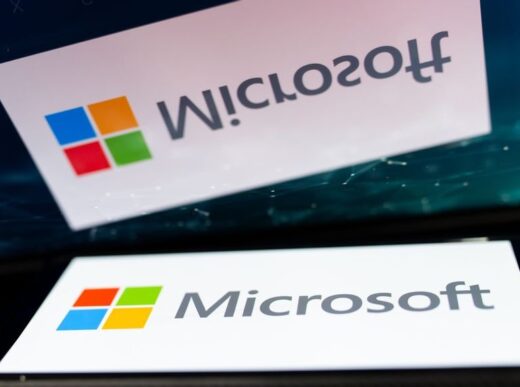Rivian Automotive (RIVN -7.86%) ignited anticipation with its second-quarter 2023 results unveiling. While its after-hours trading session displayed minimal fluctuation, the premium electric vehicle (EV) manufacturer’s performance eclipsed Wall Street projections. This achievement was underscored by robust revenue and adjusted earnings per share. Additionally, Rivian’s announcement of an elevated 2023 production target to 52,000 units from the prior 50,000 reaffirms its ambitions. This article delves into the intricacies of Rivian’s Q2 2023 results and prospects, delving into pivotal metrics that illuminate the company’s trajectory.
Evaluating Rivian’s Earnings Resilience
Amid the unveiling of its second-quarter 2023 outcomes, Rivian’s stock movement remained relatively muted in the after-hours market. The EV manufacturer’s performance, however, speaks volumes. Outshining Wall Street’s predictions, the quarter witnessed revenue and adjusted earnings per share scaling heights that surpassed expectations. This robust display of resilience underscores the potential of Rivian’s business model, further supported by the upward adjustment of its 2023 production forecast.
Navigating the Tug of War: Revenue vs Cash-Burn Rate
While Rivian’s performance showcases commendable revenue growth, the concern over its cash-burn rate looms on the horizon. A pivotal aspect for nascent EV entities, swift production escalation remains paramount in mitigating fixed costs per vehicle. This calculated move is instrumental in curbing the rate of capital depletion. In the context of these challenges, the spotlight shifts to the dynamic equilibrium between revenue upsurge and prudent financial management.
A Glimpse into Rivian’s Q2 Performance
The foundation of Rivian’s Q2 2023 performance is delineated through a comprehensive assessment of eight crucial metrics. These metrics encapsulate the company’s revenue, production, expansion initiatives, financial indicators, and prospective growth.
Revenue Leap: Surpassing Projections and Historical Benchmarks
- Exceeding Expectations: Rivian’s Q2 2023 revenue leaped to $1.12 billion, outperforming Wall Street’s consensus estimate of $1 billion. This remarkable feat marked a 208% surge from the corresponding period in the previous year and a 70% escalation from the previous quarter. This revenue surge was chiefly propelled by vehicle deliveries in the quarter, with regulatory credits contributing $34 million.
Paving the Path of Production Expansion
- Accelerating Production: The second quarter witnessed Rivian’s production of 13,992 vehicles, reflecting a remarkable 49% surge compared to the previous quarter. This impressive rise was bolstered by the company’s strategic ramp-up of its in-house Enduro motor line. The accumulated production for the first half of 2023, totaling 23,387 vehicles, is notably close to the aggregate production of 24,337 vehicles achieved throughout the entirety of 2022.
Powering the Delivery Revolution
- Fulfilling Amazon’s Vision: Rivian’s pivotal collaboration with Amazon for the creation of 100,000 customized electric delivery vans is making considerable strides. The number of vans produced and delivered during the quarter remains undisclosed. However, the deployment of these electric delivery vehicles across more than 800 cities in the United States, coupled with the initiation of deliveries in Europe, reinforces Rivian’s commitment to revolutionizing last-mile delivery.
Balancing Loss and Growth
- Evolving Financial Landscape: Rivian’s loss from operations in Q2 stood at $1.29 billion, indicating a 25% reduction from the corresponding period in the preceding year.
- Taming the Losses: The net loss for the quarter amounted to $1.20 billion, translating to $1.27 per share. This represents a remarkable 33% improvement from the year-ago quarter. Adjusting for one-time elements, the net loss narrowed to $1.02 billion, equating to $1.08 per share. This outperformed Wall Street’s projected loss of $1.41 per share.
Unpacking the Cash Flow Dynamics
- Cash Utilization and Optimization: The operational cash used during Q2 totaled $1.36 billion. While this is a surge from the $1.20 billion reported for the same period in the previous year, it signifies an improvement from the $1.52 billion reported in the preceding quarter. The year-over-year increase in negative operating cash flow is primarily attributed to the expansion of raw material and finished goods inventory, linked to heightened production activity.
Financial Fortitude and Long-Term Prospects
- Liquidity Snapshot: Rivian concluded the quarter with a commendable balance of $10.2 billion in cash, cash equivalents, and short-term investments. Balancing this financial vitality is a long-term debt of $2.72 billion. With its current cash-burn rate, the company’s liquidity could sustain operations for approximately 6.3 quarters, offering investors a moderately favorable outlook.
Amplifying Production Prowess
- Elevating Production Horizon: Rivian’s strategic vision for 2023 encompasses the production of 52,000 total units, a significant step up from the prior target of 50,000. This augmentation mirrors an ambitious 114% annual increase compared to the total production of 24,337 vehicles achieved in 2022. Additionally, the adjusted outlook for earnings before interest, taxes, depreciation, and amortization (EBITDA) offers a ray of optimism.
Conclusion: Rivian’s Trajectory Beyond Expectations
Rivian’s Q2 2023 results epitomize its commitment to innovation, expansion, and financial equilibrium. As the company balances revenue escalation with a concerted effort to mitigate cash-burn rates, its trajectory remains poised for a promising future. The augmentation of production targets and the resilience displayed in the financial metrics underscore Rivian’s evolution from an early-stage EV manufacturer to a formidable player in the automotive landscape.















